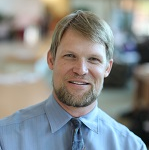Universe: Feature Papers 2023—Field Theory
A special issue of Universe (ISSN 2218-1997). This special issue belongs to the section "Field Theory".
Deadline for manuscript submissions: closed (29 February 2024) | Viewed by 15775

Special Issue Editor
Interests: quantum field theory; quantum gravity; quantum cosmology; traversable wormholes; casimir effect; quantum information theory; quantum thermodynamics; philosophical foundations of quantum mechanics; multiverse concepts, especially those related the sciences and philosophy
Special Issues, Collections and Topics in MDPI journals
Special Issue Information
Dear Colleagues,
This Special Issue aims to cover topics, original research, and peer-reviewed articles related to the latest research and developments in the wide-ranging realm of field theory. Field theory is an interdisciplinary subject and covers a vast domain of topics, including both theoretical and experimental issues. Potential topics include, but are not limited to, the following:
- Classical field theory;
- Quantum field theory, including string field theory;
- Field theory of scalars, spinors, vectors, and higher rank tensors;
- Abelian gauge fields and quantum electromagnetics;
- Non-abelian gauge fields;
- Weak interactions;
- Strong interactions;
- Standard model of physics;
- Unified field theory;
- Grand unified field theory;
- Supersymmetric field theory;
- Perturbative field theory;
- Non-perturbative field theory;
- Feynman diagrams;
- Conformal field theory;
- Continuous random fields;
- Spontaneous symmetry breakdown;
- Statistical field theory of many-body systems;
- Spacetime symmetries;
- Internal symmetries;
- The vacuum;
- Renormalization;
- (Dynamics) Casimir effect.
You are invited to send short proposals for submissions of feature papers to our Editorial Office (universe@mdpi.com). They will first be evaluated by Editors, and the selected papers will be thoroughly and rigorously peer reviewed.
Prof. Dr. Gerald B. Cleaver
Guest Editor
Manuscript Submission Information
Manuscripts should be submitted online at www.mdpi.com by registering and logging in to this website. Once you are registered, click here to go to the submission form. Manuscripts can be submitted until the deadline. All submissions that pass pre-check are peer-reviewed. Accepted papers will be published continuously in the journal (as soon as accepted) and will be listed together on the special issue website. Research articles, review articles as well as short communications are invited. For planned papers, a title and short abstract (about 100 words) can be sent to the Editorial Office for announcement on this website.
Submitted manuscripts should not have been published previously, nor be under consideration for publication elsewhere (except conference proceedings papers). All manuscripts are thoroughly refereed through a single-blind peer-review process. A guide for authors and other relevant information for submission of manuscripts is available on the Instructions for Authors page. Universe is an international peer-reviewed open access monthly journal published by MDPI.
Please visit the Instructions for Authors page before submitting a manuscript. Submitted papers should be well formatted and use good English. Authors may use MDPI's English editing service prior to publication or during author revisions.





